This gay man spent a year undercover in the alt-right. Here’s his story
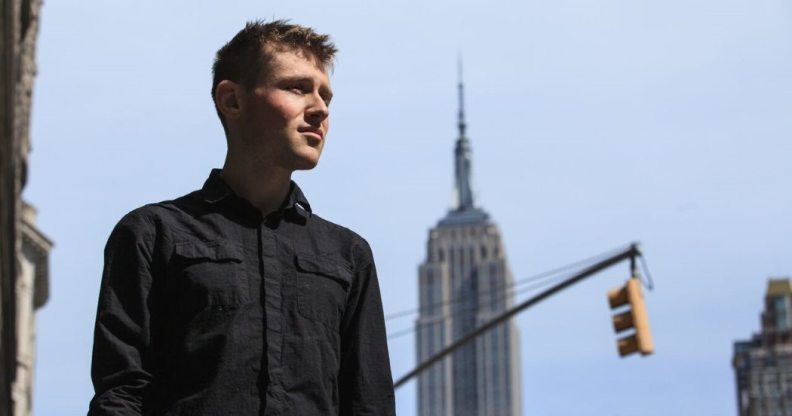
(Patrik Hermansson)
Patrik Hermansson, a gay activist from Sweden, has spent the last year undercover inside the alt-right.
Working for British anti-racist group Hope Not Hate, Patrik managed to infiltrate some of the most dangerous far-right organisations in the US and the UK, including Charlottesville and the horrors that occurred there.
He first gained entry into the alt-right by claiming to be “a disillusioned Swede curious about the alt-right movement in the UK.”
Neo-Nazis are known to be “obsessed with Sweden because of its ‘Nordic’ heritage”, so Patrik’s Swedish roots were favoured by alt-right leaders.
He used this as a way to gain their trust.
[youtube https://www.youtube.com/watch?v=2B0Sxx4wGkI&w=560&h=315]
Speaking to PinkNews, Patrik described what it was like being at the heart of such a volatile and hateful movement.
When asked how he first got involved with Hope Not Hate, Patrik said simply in his soft-spoken voice: “I got into it because I was an anti-fascist.
“Then I got the opportunity to do a little project for them, and that turned into more and more and more.”
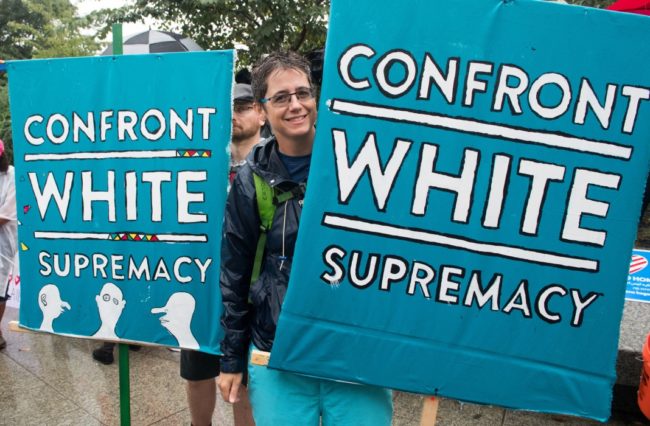
(Getty)
He moved to England to study, and soon began working with Hope Not Hate.
The plan to infiltrate the alt-right, he said, “started as a small thing”.
“It was just about me going to a few meetings, getting a little bit of information.
“We never saw this becoming a big news item. It was about finding out what they were doing … what happens behind closed doors – that’s really what we’re interested in.”
The main goal at first was to simply gain inside information about the organisation – to find out their plans for events and what their recruitment process entailed.
“We want to use that research in our campaigning,” he said. “By having research, we know what to target and where we can do the most effective work.”
The prospect of a more in-depth, undercover mission came about when his team realised that his persona had potential, helped largely by his Swedish background, which was regarded as “pure, undiluted whiteness” by alt-right leaders.
He moved up the alt-right ranks quickly, soon finding himself involved in the recruiting process along with vetting potential new members.
“That’s one of the most valuable things about this project,” he said.
“I know what questions they ask, and I know what kind of people come [to join the alt-right] and their reasons for coming.”
He also mentioned “red-pilling”, a term used by the alt-right that refers to seeing through the curtain to “understand the left-wing conspiracy and influence over society, and the ‘truth’ about race – which is that people are different.”
“They really believe that people are not just different, but have different worth and capabilities based on skin colour and gender,” he added.
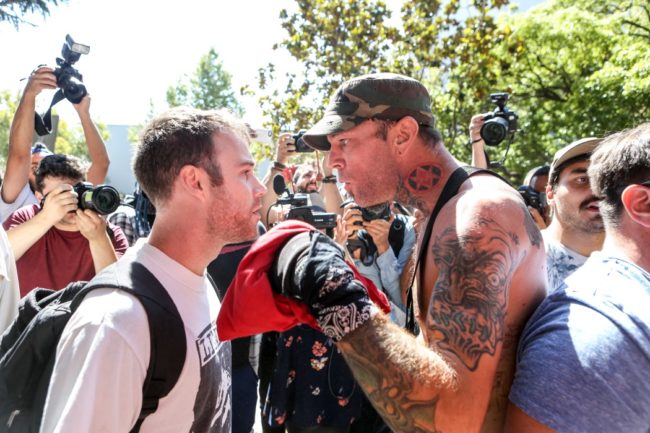
(Getty)
During the interview, Patrik said he “has always been curious,” especially since he started working as a researcher, but that his mission also came with an element of fear.
“Of course, at times, yeah, you’re scared.”
“There’s always this [fear], being afraid of being found out,” he explained, “especially in the US, [because] they’re armed in the US.
“And they really like their guns.”
He recalled a barbecue he attended in Seattle that was hosted by a group of white supremacists who were “openly making Holocaust jokes” in a house filled with swastika flags and Hitler memorabilia.
“They would talk about what they would do if an anti-fascist was there,” he added. “And then I was really afraid.”
“You sit in those rooms and people talk about blood running down the streets – it’s pretty extreme.”
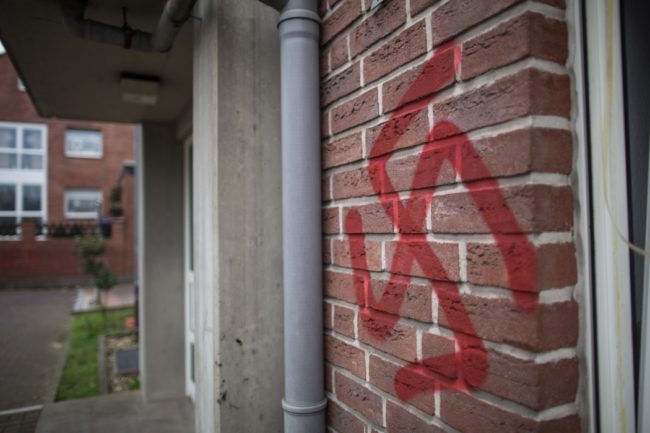
(Getty)
He said it was hard at times, being exposed to such hateful views.
“Of course, you want to stand up, you want to scream, you want to argue. You want to do something, or leave.
“But you can’t do any of those things, so you just have to sit down and smile.”
Patrik described these moments as “claustrophobic,” saying he felt “locked in.”
But he added that “you have to think of the bigger perspective,” explaining that “arguing with those people there wouldn’t do anything.
“It wouldn’t change their views. I would get kicked out. … I wouldn’t have continued getting important information out of it.”
So Patrik continued with the mission for a whole year.
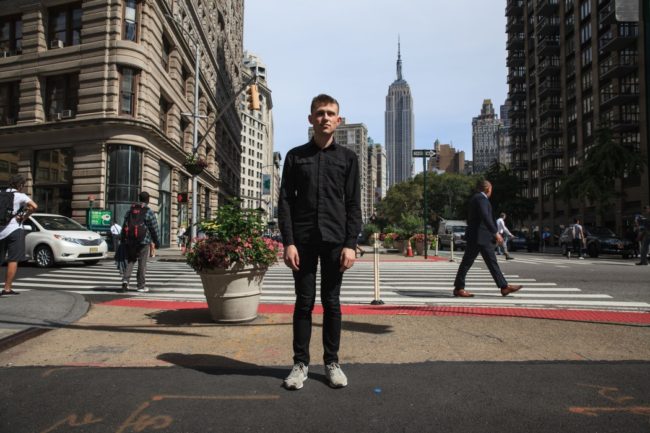
(Patrik Hermansson)
Since leaving the movement, he has been on the receiving end of an alt-right backlash.
“It’s like, murder threats, mostly,” he said.
“And people saying that I wasn’t deep inside enough […] and that I made stuff up.”
He said most of these comments come from people he hasn’t actually met.
Most influential members of the alt-right have simply shut him out and not made any attempts to contact him.
He did not regret infiltrating the extremist organisation, however. No chance.
“[We need infiltration] in order to understand them,” he said – “how they recruit, future plans, how they’re going to organise, what communities they want to target, what campaigns they’re going to run, where they get their money – this is impossible to get [as] a journalist.”
He added: “We have received criticism for it […] that it’s dishonest, unfair. Of course it’s dishonest. […] [But we need to do it] to map their networks and organise against them.”
Patrik’s report also included an account of the last month’s deadly Charlottesville protests, about which he said: “We expected some confrontation, but to this degree? No.
“We didn’t expect the media attention to be as high as it was.
“And of course, we didn’t expect the terrorist attack.”
He described the rally as “tense,” elevated by people armed with weapons as well as shields and gas masks.
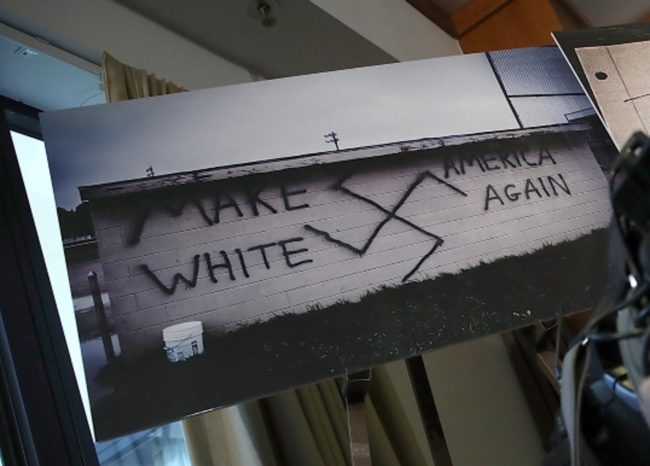
(Getty)
Since leaving the alt-right and regaining his normal life, he has had time to reflect.
In his report, he urged his counterparts to do what he could not do inside the ranks of the far-right, and challenge every prejudiced statement they hear.
“Allowing these hateful ideas to go unchallenged allows them to become normal,” he said.
“It brings about the creeping acceptance of alt-right and far-right ideas in the mainstream.
“If we don’t stand up every time we see racism, sexism, homophobia, or oppression of any type, we run the risk of it becoming seen as normal.”
Patrik has compiled a detailed and harrowing report of his time within the alt-right, which has since been publicised on the Hope Not Hate website.
The New York times shared a short video of Patrik talking about his experience, along with secret footage of him speaking with alt-right members.

